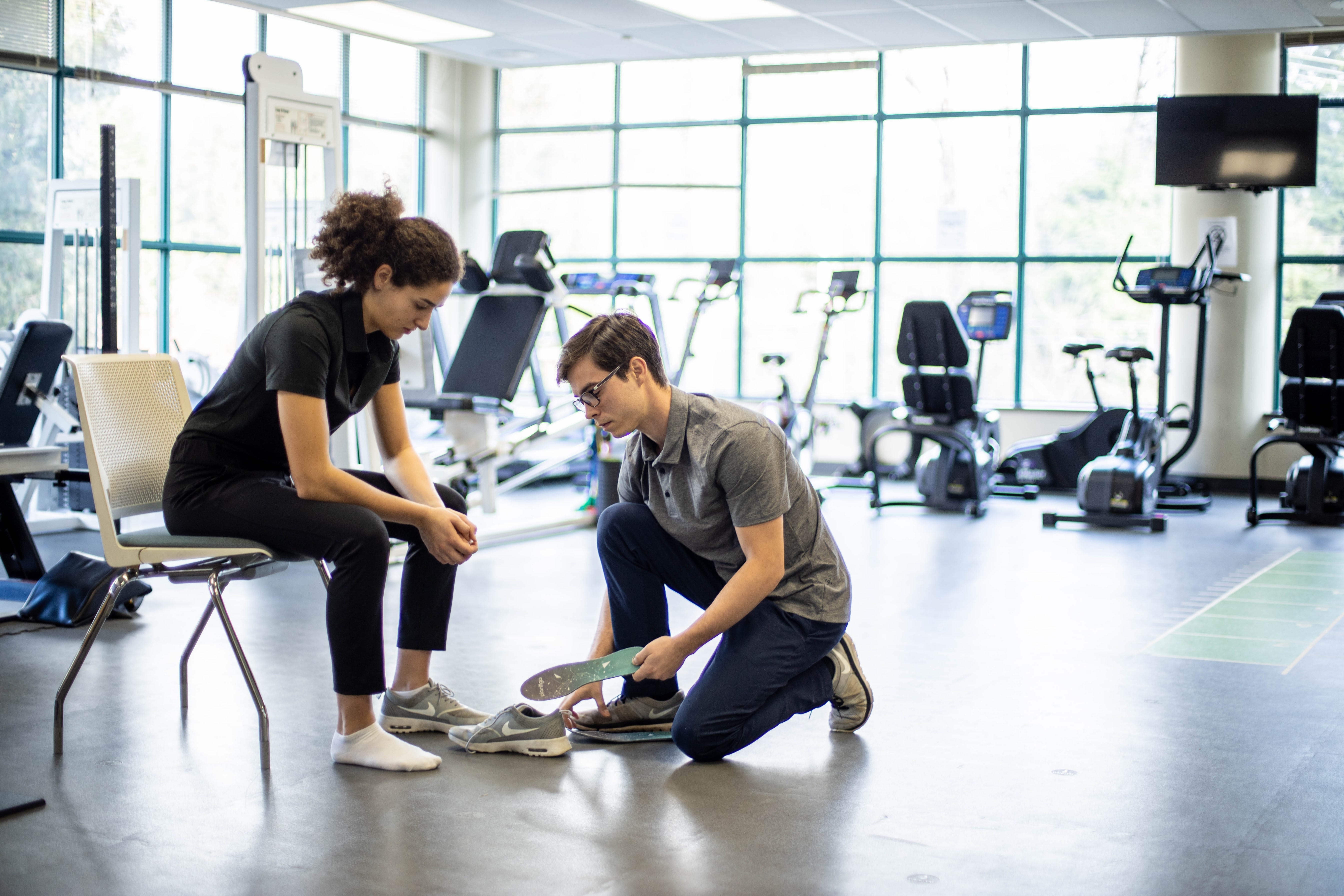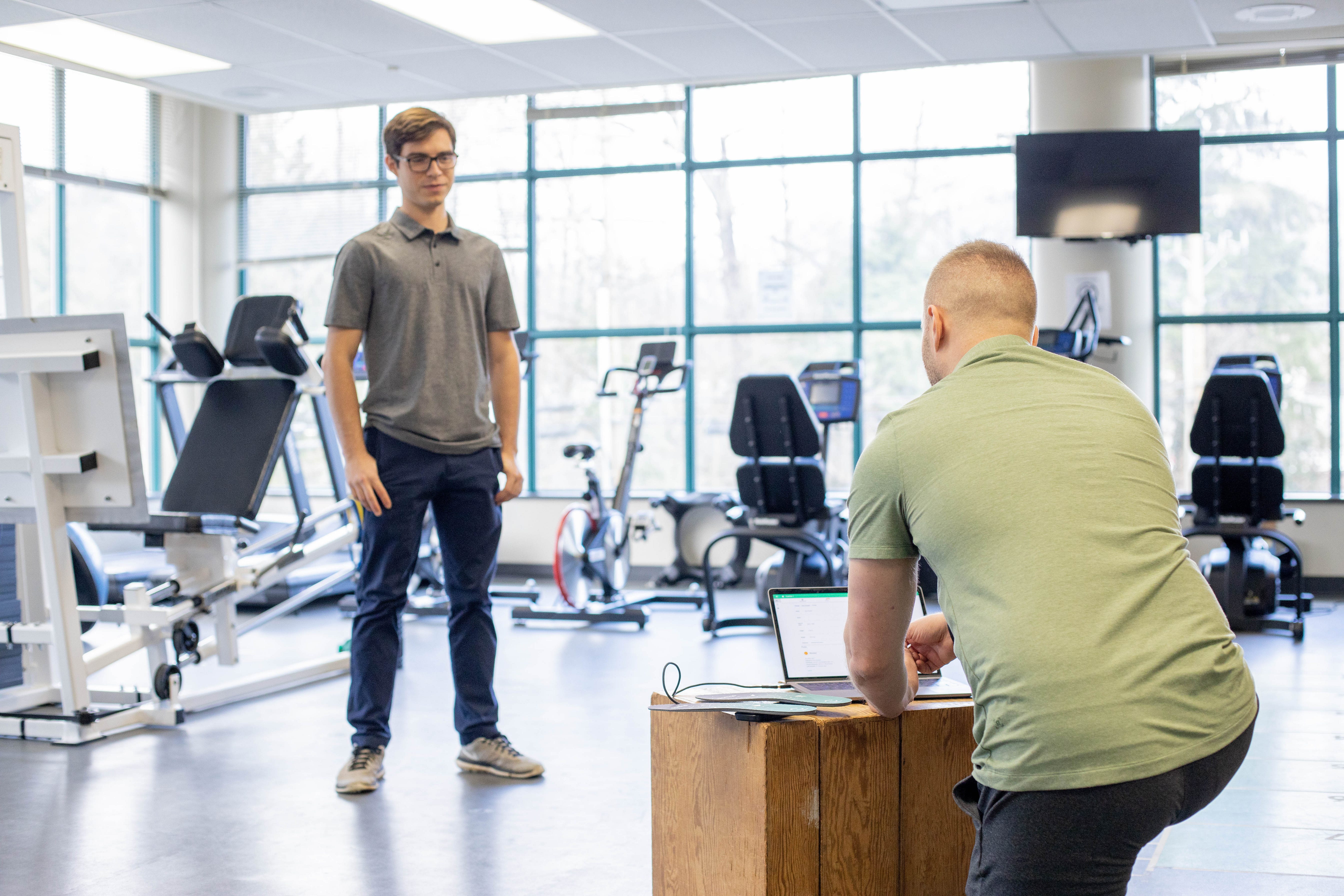Plantiga from a Practitioner’s Perspective
Using Data to Elevate Your Practice

As a physiotherapist working out of the Glen Sather Sports Medicine Clinic in Edmonton, AB, I work with a large population of people (we’ll call them athletes here as most play sports anywhere from a national to recreational level) with knee injuries and have been lucky enough to spend a majority of my time on knee assessments and knee rehab. The Glen Sather clinic has an interdisciplinary knee team composed of orthopaedic surgeons, sport med doctors and physiotherapists that work together to provide evidence-based care. As a knee team physiotherapist there, one of my major roles is to take someone with an anterior cruciate ligament (ACL) tear from injury to return to sport (RTS) with or without an ACL reconstructive surgery somewhere in between, depending on what they decide. Throughout this rehab, it is important that the athlete have both objective and subjective milestones that guide their journey back to the pitch, field, snow etc. There is a plethora of tools available to aid in the process of testing and assessing an athlete’s abilities but I’ve found that Plantiga does a great job of allowing testing to be done anywhere with validity and reliability.
Some background information
The ACL is the most commonly injured ligament of the knee, happening in under 60ms of someone’s foot hitting the ground, while the rehabilitation process is lengthy, taking up to 2+ years to get an athlete back to pre-injury level of sport. In a systematic review by Ardern et al. in 2011, the data showed that up to 90% of individuals meet the criteria for near or full normal knee function, however only 63% of athletes return to their pre-injury level of sport. For athletes in competitive sport this number is even lower, with rates around 44% of athletes returning at an average of 36.7 months. This shows a clear discrepancy between meeting the criteria of RTS and actually returning to a sport, which could be due to the inability of the criteria or practitioners to adequately assess the capabilities needed to return to sport. It could also be because as of right now there is no set upon criteria that determines whether or not an athlete is fully ready to return to his/her sport. There are common “themes” in the literature, which include symmetry of quadricep and hamstring muscle strength of >85%, a battery of dynamic tests, and functional status or psychological status via questionnaires, however there is not a standardized criteria.
Are we doing enough to get our athletes prepared to get back on the field? Certain research highlights that while athletes’ maximal strength values can be normal or symmetrical after having an ACL reconstruction as early as the 6 month mark, reactive strength and rate of force development takes longer. Reactive strength is crucial to performance and injury risk reduction, especially when it comes to ACL injuries. With the amount of time it takes an ACL to tear, the neuromuscular system needs to be doing its job. Therefore, an ability to activate musculature quickly to absorb and produce force when loading the knee joint during activities like deceleration, planting and cutting, or landing has been suggested to be a factor that protects the ACL from excessive strain rates (Angelozzi et al., 2012, Hannah et al. 2014).
This is where I’ve used Plantiga as a very helpful asset to overall assessment in an athlete’s current capabilities and when it comes to vital information needed for program design. Unless your clinic or gym has access to force plates or other force measuring devices to collect objective data with dynamic testing like a squat jump test or countermovement jump test*, then it’s really hard to gather all the information you’ll need as a practitioner in getting your athlete back to sport- this is where Plantiga really fills the gap.
Here’s what my typical sessions with Plantiga usually look like

I dock the pods as soon as I arrive so they’re ready by the time I see my first athlete. Keeping them docked after or between appointments (or while you’re charting/writing programs) keeps them charged and ready to go for the next day. I use disinfecting wipes on the insoles after each session, which dries quickly enough so the next athlete isn’t using them damp. I usually work in 30 min, 45 min, or hour long sessions (depending on what the athlete needs) and usually see my clients every 2–6 weeks to test or re-test, evaluate, and/or progress their programs. If I’m not confident that the athlete is doing their program or they want to come in more often, then I see them more frequently. This is based on a case by case needs analysis.
I use the Plantiga insoles at the start of the session to get baseline numbers and have started testing again at the end of the session to see how an athlete deals with fatigue. The more times I test, the more data I have. That being said, I usually don’t test an athlete more than once a month based on the frequency that I see most people.
If an athlete is still in the early phases of their ACL rehab, then just using the walk test can give more information on limb loading strategies during functional daily movements. With the data from the insoles you can show athletes an (almost) real time graph of what their movement patterns look like and any asymmetries, which is especially helpful if an athlete feels like they’re walking “normally.”
This is a huge buy-in for the importance of testing throughout their rehab process, especially when they start reaching their strength milestones and feel like they are ready to return back to sport the moment they achieve this. Even if you’ve prepped them from the beginning that they might feel ready before they actually are, it really helps to have some concrete data that shows them where they’re at from a reactive strength perspective.
If the athlete is mid-late phase ACL rehab I’ll do the recommended test battery of walk, run, counter movement jump, and cyclic jump testing*. I find it very beneficial to do both the counter movement jump testing and the cyclic jump testing. Countermovement jumps are more indicative of the neuromuscular performance in thigh muscles (like quads and hamstrings), while the cyclic jump testing can give more insight into the neuromuscular performance of the ankle. I’ve found on numerous occasions that someone can have great reactive strength index scores and/or good symmetry between legs on one test, while the other test can show large deficits and asymmetries. Ankle stiffness is one of the primary determinants to controlling tibial anterior translation (i.e what the ACL is also responsible for) so if deficits are missed on that front, the athlete might not yet be prepared to handle the demands of their respective sport.
After testing I get the athlete to take out the insoles so I can dock the pods and get the data uploading while we go through the rest of our session. The data takes 3–10 minutes to upload and then I get the benefit of reviewing the results with my athlete during the session or immediately afterwards so the information stays relevant and fresh and the athlete can connect the testing to what we just went over and how they felt. Zooming in on the graphs can also give you some additional information on strategies the athlete is using - like taking off early on one leg or landing before the other.
Afterwards I send the athlete a PDF copy of their results. Plantiga doesn’t actually add much time to the session because I’d be using the jump tests as assessment or using them in their program. I think the best type of software is one that can seamlessly integrate and elevate current practice and Plantiga does this exceptionally well.
*If you want to read more about the capacities that jump tests measure read Matt Jordan’s blog post here. He does a comprehensive job of explaining why jump testing is so important.
References
Aagaard P. Training-induced changes in neural function. Exerc Sport Sci Rev. 2003;31:61–6
Ardern C, Webster K, Taylor N, Feller J. Return to sport following anterior cruciate ligament reconstruction surgery: a systematic review and meta-analysis of the state of play. Br J Sports Med 2011;45:596.
Angelozzi, M., Madama, M., Corsica, C., Calvisi, V., Properzi, G., McCaw, S. T., & Cacchio, A. (2012). Rate of force development as an adjunctive outcome measure for return-to-sport decisions after anterior cruciate ligament reconstruction. journal of orthopaedic & sports physical therapy, 42(9), 772–780
Guest Author - Isabel Aldrich-Witt Physiotherapist at Canadian Sport Institute Calgary
